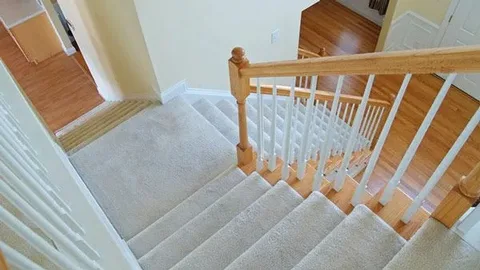Mastering the Art of Stair Tread Installation with the Right Adhesive
Installing stair treads can be a daunting task, especially for those who are new to DIY projects. However, with the right guidance and tools, it can be a rewarding experience that enhances the beauty and safety of your home. In this article, we will provide a step-by-step guide on installing stair treads with the right adhesive, ensuring a successful and long-lasting installation.
The Importance of Proper Stair Tread Installation
Proper stair tread installation is crucial for several reasons. Firstly, it ensures the safety of users by providing a secure and stable surface to walk on. Secondly, it enhances the aesthetic appeal of your home by creating a beautiful and cohesive look. Finally, it increases the value of your property by providing a durable and long-lasting solution.
Preparing the Staircase
Before installing the stair treads, it is essential to prepare the staircase. This involves removing existing carpet, vinyl, or coverings to expose the raw unfinished backer tread. Use a skill saw or jigsaw to cut the bull nose of the tread back flush with the existing riser. Clean the edges next to the skirt board with a chisel to ensure a smooth surface.
Removing Old Adhesive
If you are replacing old stair treads, it is essential to remove the old adhesive completely. Use a chisel or pry bar to remove the old adhesive between the tread/riser and stringer framing. This will ensure a clean surface for the new adhesive.
Choosing the Right Adhesive
Choosing the right adhesive is critical for a successful stair tread installation. PL Premium and Thompson’s TiteBond Construction adhesive are recommended for solid wood treads. These adhesives provide a strong bond and are resistant to moisture. Water-based or low VOC adhesives can cause warping and cupping due to excess moisture, and using them may void the warranty.
Recommended Adhesives
- PL Premium: Recommended for solid wood treads
- Thompson’s TiteBond Construction adhesive: Recommended for oak stair end caps and risers
- Urethane-based construction adhesive: Recommended for installing Aeratis Stair-Tread on joists/stringers
Installing the Riser
Cut the 1/4″ RetroFit riser to length and finish nail it using construction adhesive. Pre-drill nail holes to prevent the riser from splitting. Ensure the surface is clean, dry, and free of dust and debris before applying the adhesive.
Tips for Installing the Riser
- Use a miter saw, circular saw, jigsaw, or table saw with carbide blades for cutting
- Countersink screws at least 1/4″ into the boards
- Add additional support between stringers using a treated 2″ x 4″ standing vertical
Installing the Tread
Cut the RetroFit tread to length and finish nail it using construction adhesive. Install 3/4″ x 1/2″ RetroFit cove moulding to conceal gaps. Ensure the surface is clean, dry, and free of dust and debris before applying the adhesive.
Tips for Installing the Tread
- Acclimate Aeratis Stair-Tread for 24 hours before installation, removing protective film
- Use #7 or #8 ceramic coated, galvanized, or stainless-steel screws, at least 2″ long
- Countersink screws at least 1/4″ into the boards
- Add additional support between stringers using a treated 2″ x 4″ standing vertical
Additional Installation Tips
- Avoid installing Aeratis Stair-Tread using butt-joints
- Consider using pocket screws for a cleaner installation method
- Gorilla Glue can provide strong adhesion but requires misting the area with water first
- Ensure the surface temperature is above 50°F for proper adhesive application
Special Considerations
- Installing Aeratis Stair-Tread using urethane-based construction adhesive on joists/stringers
- Avoid using adhesive-backed non-slip treads outdoors due to limited usability and durability issues
- Construction adhesive helps prevent stairs from squeaking but is not necessary for strength
Conclusion
Installing stair treads can be a challenging task, but with the right guidance and tools, it can be a rewarding experience. By following the steps outlined in this article and choosing the right adhesive, you can ensure a successful and long-lasting installation. Remember to always follow safety guidelines and manufacturer instructions when working with power tools and adhesives.


